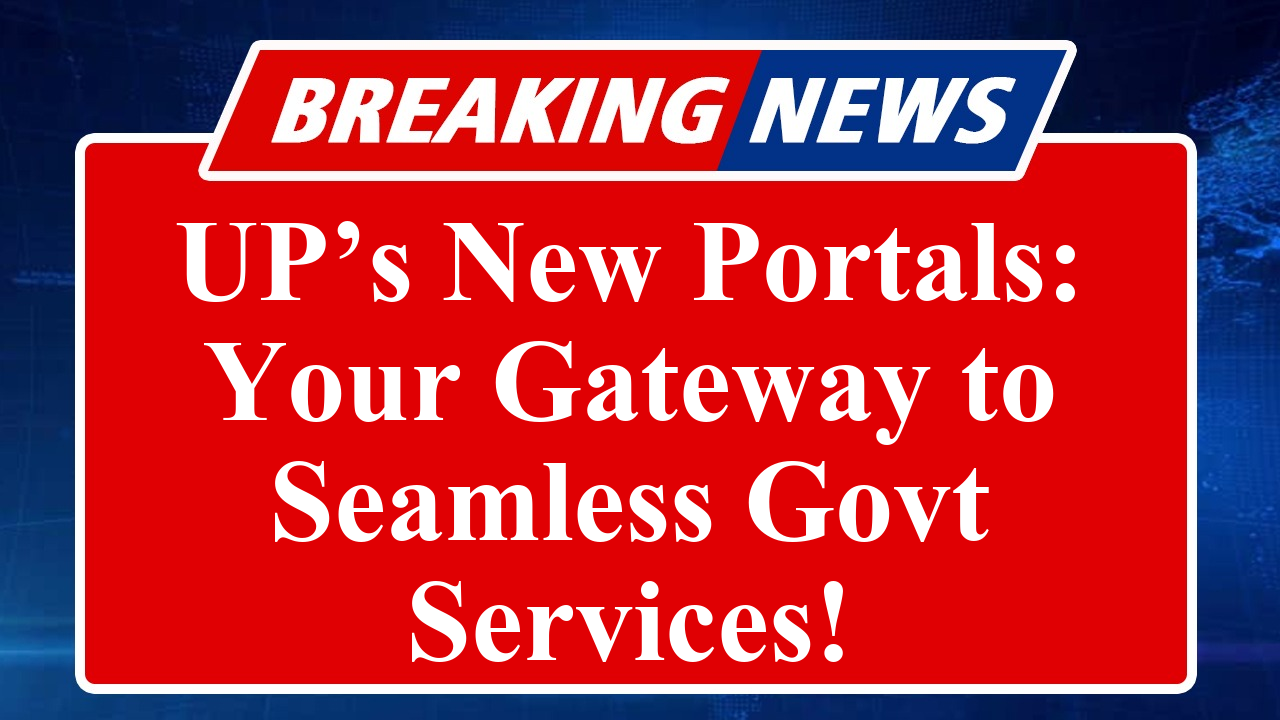“Uttar Pradesh has launched innovative e-governance portals to streamline citizen services, offering seamless access to government schemes, grievance redressal, and digital payments. These platforms aim to boost transparency, efficiency, and accessibility, empowering citizens and reducing bureaucratic hurdles. The initiative aligns with Digital India, transforming governance in the state.”
Uttar Pradesh Bolsters Digital Governance with New Citizen-Centric Portals
In a significant stride toward digital transformation, the Uttar Pradesh government has rolled out a series of advanced e-governance portals designed to simplify access to public services and enhance citizen engagement. These platforms, launched under the state’s broader adoption of the Digital India initiative, aim to deliver government-to-citizen (G2C) services with greater efficiency, transparency, and accessibility.
The new portals include the revamped Integrated Grievance Redressal System (IGRS), popularly known as Jansunwai, which allows citizens to lodge complaints and track their resolution in real time. The platform has been upgraded to integrate artificial intelligence (AI) for faster grievance categorization and resolution, ensuring quicker responses to public queries. As of July 2025, over 1.2 million grievances have been resolved through Jansunwai, with an average resolution time reduced to 7 days from 15 days in 2023, according to state government data.
Another flagship portal is the Digital Seva Portal, which serves as a one-stop hub for accessing over 200 government services, including utility bill payments, certificate issuance, and scheme applications. The portal integrates with the MeriPehchaan single sign-on platform, enabling citizens to use a single set of credentials to access services across departments. This eliminates the need for multiple registrations and enhances user convenience. The state has reported that over 4 million rural and 3 million urban citizens access these services monthly, reflecting a robust digital outreach.
The UP e-Shram Portal, tailored for unorganized workers, has also been enhanced to facilitate seamless registration and access to welfare schemes. With over 300 million workers registered nationwide, Uttar Pradesh alone accounts for 60 million registrations, making it a critical tool for financial inclusion. The portal now supports Aadhaar-enabled direct benefit transfers (DBT), disbursing over ₹5,000 crore in benefits to workers in 2024-25, as per the Ministry of Labour & Employment.
To bridge the digital divide, the state has expanded its network of Common Service Centres (CSCs), with over 16,000 centres operational across Uttar Pradesh. These centres provide digital access to rural citizens, offering services like DigiPay for cashless transactions and pension distribution through CSC Pension Vitran Kendras. The state’s collaboration with HDFC Bank introduced the ‘Eva’ chatbot on the Digital Seva Portal, assisting village-level entrepreneurs in delivering banking services to remote areas.
The Navigate India portal, adhering to the Government of India’s GIGW guidelines, is another notable addition. It serves as a centralized repository for video content from various ministries, making government schemes and policies more accessible through multimedia. The platform’s mobile-responsive design ensures usability across devices, catering to the state’s growing smartphone penetration, which reached 68% in rural areas in 2024, per telecom sector reports.
Uttar Pradesh’s e-governance push aligns with the National e-Governance Plan (NeGP) and Digital India’s vision of a digitally empowered society. The state’s investment in telecom infrastructure, supported by the BharatNet project, has ensured broadband connectivity to over 2.5 lakh gram panchayats, enabling seamless access to these portals. The State Wide Area Network (SWAN) and State Data Centres (SDCs) further bolster the digital infrastructure, providing secure data storage and real-time service delivery.
Despite these advancements, challenges remain. Digital literacy, particularly among rural and elderly populations, is a hurdle, with only 45% of rural citizens proficient in using digital platforms, according to a 2024 survey by the National Informatics Centre (NIC). Cybersecurity is another concern, with the state prioritizing initiatives like the CISO Deep-Dive Training Programme to strengthen data protection. The government is also addressing linguistic barriers by offering portal interfaces in Hindi and regional dialects, ensuring inclusivity.
These portals reflect Uttar Pradesh’s commitment to SMART governance—Simple, Moral, Accountable, Responsive, and Transparent. By leveraging ICT, the state is reducing bureaucratic delays, minimizing corruption, and fostering a citizen-centric administration. The integration of emerging technologies like AI, biometrics, and cloud computing is set to further enhance the efficiency of these platforms, positioning Uttar Pradesh as a leader in India’s e-governance landscape.
Disclaimer: This article is based on information sourced from government websites, press releases, and reports from the National e-Governance Division (NeGD), Ministry of Electronics and Information Technology (MeitY), and other credible sources. The data presented is accurate as of August 2025. Readers are advised to verify details through official government portals for the latest updates.

